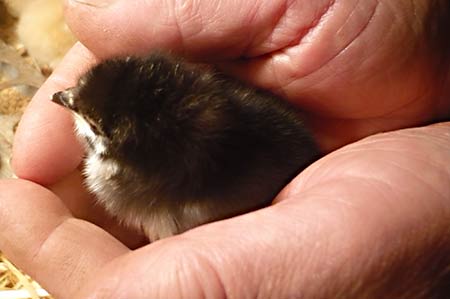 |
 |
 |
 |
 |
 |
 |
 |
 |
 |
|
Greentree Naturals Newsletter Spring / Summer 2015We started seeding our garden vegetables in early March to grow them up to a size that will endure the transplanting into the gardens in May, so our growing season is well under way in early spring. For the past 25 years, I’ve started all of our seedlings in a 14’ x 14’ greenhouse that is attached to the house. It’s a small space, but with good management, it has worked for us all these years. There is certainly a serious planning process to it. We set up a small 18’ hoop house up by the house to have a place to overflow the seedlings into after they’ve had a couple of weeks out of the germination chamber. The seedlings will grow on in the hoop house for many weeks until it is time to harden them off for transplanting into the gardens. Since the germination chamber will hold 12 flats, I always schedule seeding that many at a time by starting in plug trays. Once off the grow lights, the newly sprouted seeds are transplanted into a larger pot, which takes up more space and requires the “seedling shuffle” to accommodate and give them the room they need to grow.
As we move into the peak of the growing season for seedlings, there are many times where I am simply out of room. I can’t transplant into larger pots until I move plants out to the hoop house, and the hoop house is often so full of plants that in order to move more in, I have to move some out….it’s a cycle that has methodology, and timing is everything. Somehow, however, knowing that this is the last year I will have to do this, I find myself amazed that I have done this for so long. You do what you need to do to make things happen, and I am grateful to have been capable to making do with what we’ve got to get our seedlings growing. Why, you might ask, is this the last year I will have to do this? Through a most generous donation to the farm this spring, we were given the funding to finish off the big Greenhouse Project that began in 2005. In my winter newsletter I mentioned the financial challenges of being able to get the greenhouse fully functional and making it into a sustainable design and now this can become a reality. We are moving forward and just got the new power service in. Once we have the gardens planted, we will start working on the next steps, which will be developing an earth tube system, getting the water in, and burying wiring and pipes, and wiring the greenhouse. This is a gradual, slow motion process as we still have our two and a half acre garden to plant and tend to, but scheduling a little bit at a time and working on it through the summer with the goal to have it covered and functioning by the end of the growing season. It's all very exciting and somewhat overwhelming to add more to our to do list, but we'll find our way through. Meanwhile, with the hottest, driest spring on record, we've had to shift our typical transplanting process to divide up the days to work in the fields in the mornings, rest during the 90° temps, and return in the evening when it cools down and work until dark. We mulch as soon as we transplant to help keep the soil moisture in place and are adapting to whatever mother nature brings to us as best that we can. That's the nature of farming. You plan for cold, wet, hot and dry and do your best to care for the seedlings. There is absolutely no doubt in my mind that we are experiencing climate change as the weather is just a freaky bag of unknowns these days. We made the choice to not have any apprentices living on the farm this year, but do have one who lives off farm. Kim Marshall is an experienced gardener who wants to learn about organic and sustainable growing and we are happy to have her here as a part of the farm team. Our former apprentice Linda Kirchman who was with us last year volunteers one day a week. As we move forward with the growing season, I suspect that we will have additional volunteers coming with the harvest activities. 
A baby chick We received fifty baby chicks in the mail a couple of weeks ago to replenish our egg laying flock. We typically rotate the flock every two and a half years, but missed our window to order babies last year. The thing with chickens is, they only lay regularly for about two years, then slack off. We still have 23 hens from our old flock, but they are laying only a few eggs and no longer productive. In six months, the new girls will be laying up a storm. In the next week or two, we will start making our first deliveries to our CSA members and start selling at the farmers market again. In the early days, I used to be at the market from opening day and there every Saturday through the entire season. We've pushed that start time back a bit as there is simply too much to do on the farm that takes our time. It's shaping up to be a bountiful growing season! If you happen to be in Sandpoint this summer, we welcome farm visits on Thursdays, as it is a time that we are always here. Otherwise, call and make an appointment for a farm visit. We are always happy to let folks come and see what we're doing here.
|
2003 Rapid Lightning Road, Sandpoint, Idaho 83864 • 208-263-8957 • info@greentreenaturals.com
Site Design by Logical Expressions, Inc.


